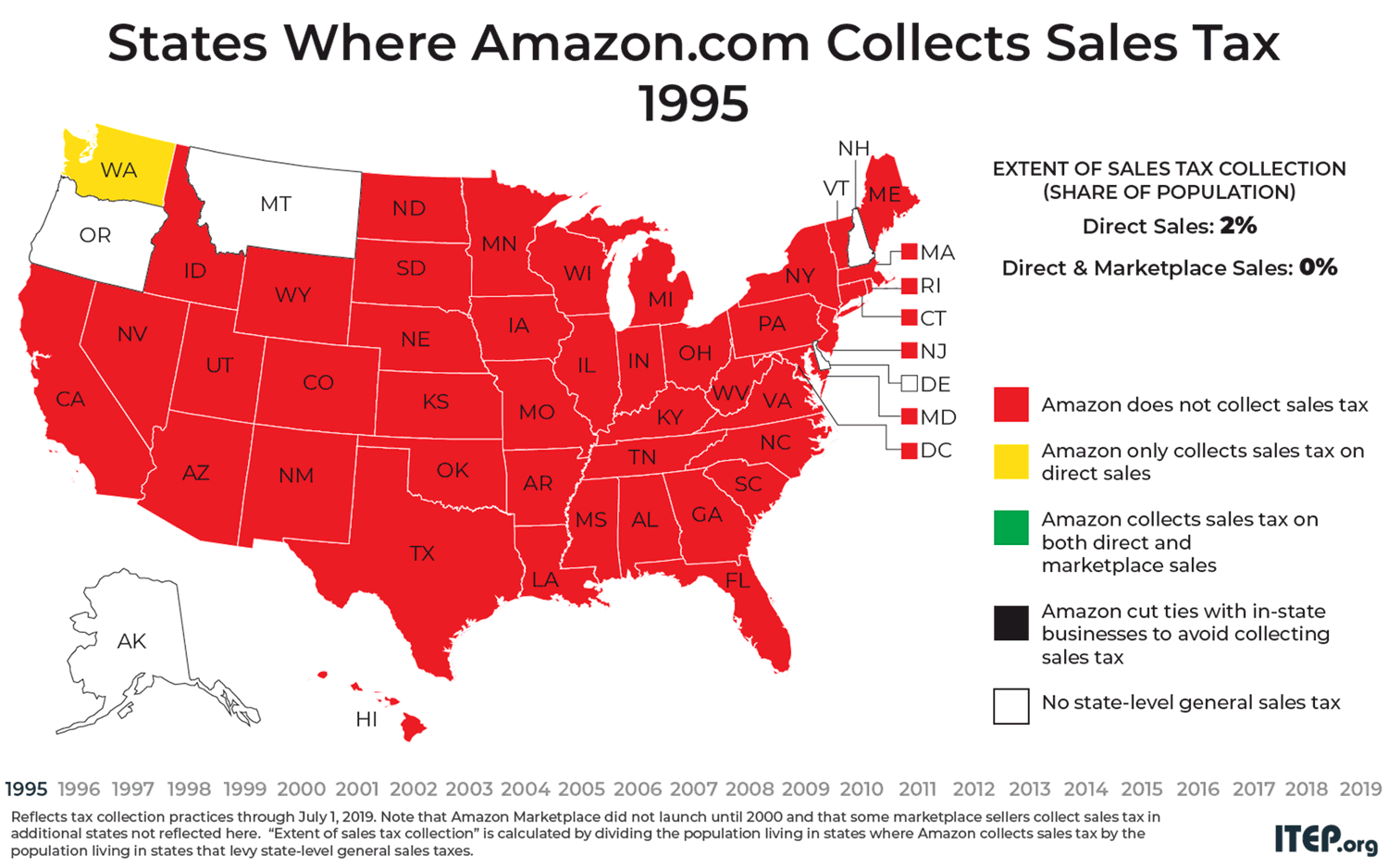This post was originally published in February 2019 and updated in July 2019.
The last few years have brought big changes to sales tax collection for purchases made at Amazon.com and other e-retail websites. As recently as 2011, Amazon was only collecting sales tax on its direct sales in five states–a fact that gave the company a competitive edge over brick and mortar stores during a critical time in its growth. Today, Amazon is collecting state-level sales taxes on all its direct sales, but it still usually fails to collect sales tax on the large volume of sales it makes through the “Amazon Marketplace.” This points to a broader problem in state tax enforcement that lawmakers should move quickly to address.
The map accompanying this article summarizes Amazon’s sales tax collection history along two dimensions: collection on products it sells directly to customers, and collection on sales that it makes in partnership with other businesses through its large and growing “Amazon Marketplace.” Today, most sales made through the Amazon.com website are sold through the company’s marketplace, which is somewhat akin to the services offered by companies such as eBay and Etsy. (Local sales tax collection practices are omitted from this map but are discussed in more detail in this ITEP report, which found that some states and localities need to update their laws to allow for local tax collection.)
Throughout most of its existence, Amazon refused to collect most sales taxes on both types of sales—both direct and through its marketplace. But as the company gradually opened warehouses and other facilities around the country, it found that it could no longer avoid the reach of state tax collection requirements. In the span of less than five years (July 2012 – April 2017), Amazon went from collecting state-level sales tax in just five states to collecting the tax in all 45 states that levy one.
The same transformation has been slower to occur in the context of Amazon’s marketplace business, however. As of July 1, 2019 Amazon is collecting sales tax on marketplace sales in 22 out of 45 states levying such taxes. These states are home to 34 percent of the U.S. population living in states with sales taxes. Notably, these same states have also largely succeeded in requiring companies such as eBay and Etsy to collect sales tax.
State lawmakers accomplished this feat by passing marketplace tax collection requirements that put the administrative responsibility for calculating, collecting, and remitting taxes on large marketplaces rather than on the multitude of companies who list their products on those marketplaces. Every state levying a sales tax should follow the lead of these trailblazers to ensure that their sales taxes are applied broadly and consistently, and to offer in-state businesses a more level playing field with the growing e-retail sector.






